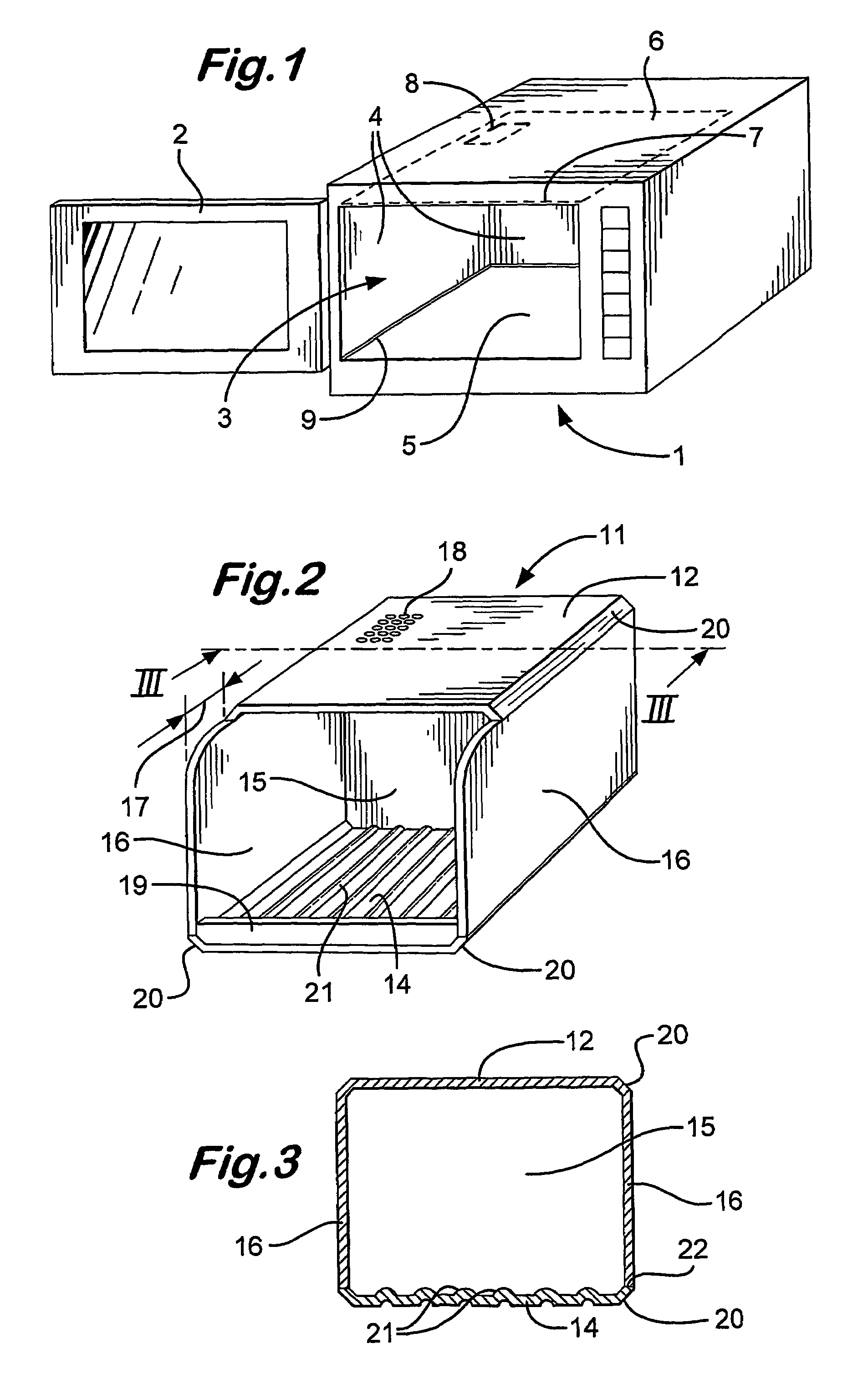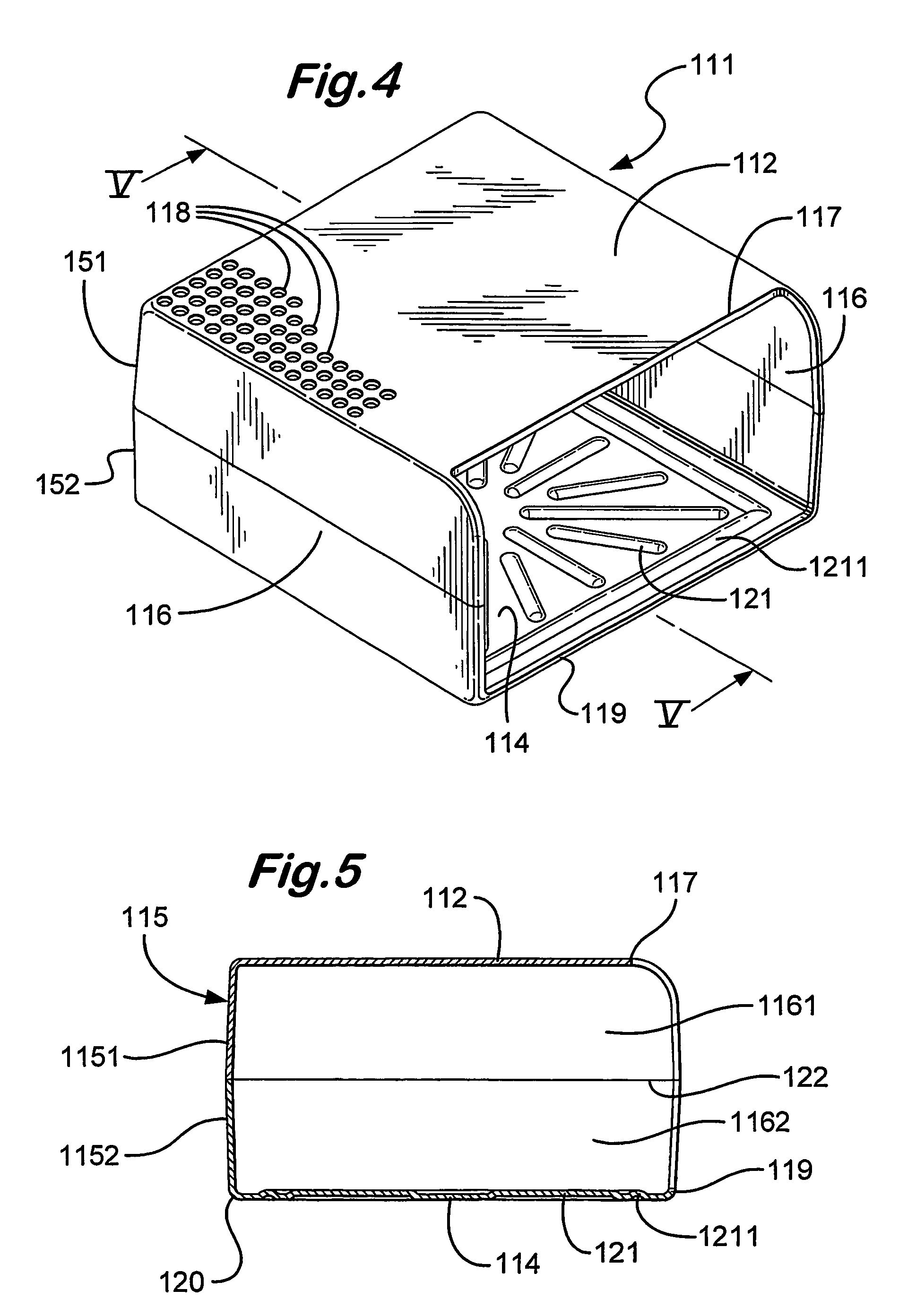Oven liner
a liner and oven technology, applied in the field of oven liner, can solve the problems of arcing and/or other damage, low practical use of liner in a heavily used commercial oven, and high cost of subsequent repairs, and achieve the effect of facilitating ridging
- Summary
- Abstract
- Description
- Claims
- Application Information
AI Technical Summary
Benefits of technology
Problems solved by technology
Method used
Image
Examples
Embodiment Construction
[0026]Referring to FIGS. 1 to 3 of the drawings, a conventional microwave oven 1 has a glass panelled door 2 (shown open) with a cavity 3 lined with steel side and back walls 4, a ceramic floor 5 and a thin plastics moulding roof 6. A gap 7 is provided at the front between the door and the roof, whilst a further aperture 8 is provided in the roof. These are for air circulation by a non-shown fan. A silicon seal 9 seals the floor to the side walls. Non-shown microwave emitters and stirrers are provided above the roof and below the floor.
[0027]A liner 11 of the invention is an injection moulding of approximately 5 mm thick elements, namely:[0028]a roof 12,[0029]a floor 14,[0030]a back 15 and[0031]two sides 16.
The moulding is of food grade polypropylene, such that the liner can be washed in a commercial dishwasher.
[0032]The liner is sized to be a sliding fit in the oven. Due to its modest wall thickness, it reduces the capacity of the oven by a small amount only, yet is sufficiently ri...
PUM
 Login to View More
Login to View More Abstract
Description
Claims
Application Information
 Login to View More
Login to View More - R&D
- Intellectual Property
- Life Sciences
- Materials
- Tech Scout
- Unparalleled Data Quality
- Higher Quality Content
- 60% Fewer Hallucinations
Browse by: Latest US Patents, China's latest patents, Technical Efficacy Thesaurus, Application Domain, Technology Topic, Popular Technical Reports.
© 2025 PatSnap. All rights reserved.Legal|Privacy policy|Modern Slavery Act Transparency Statement|Sitemap|About US| Contact US: help@patsnap.com



